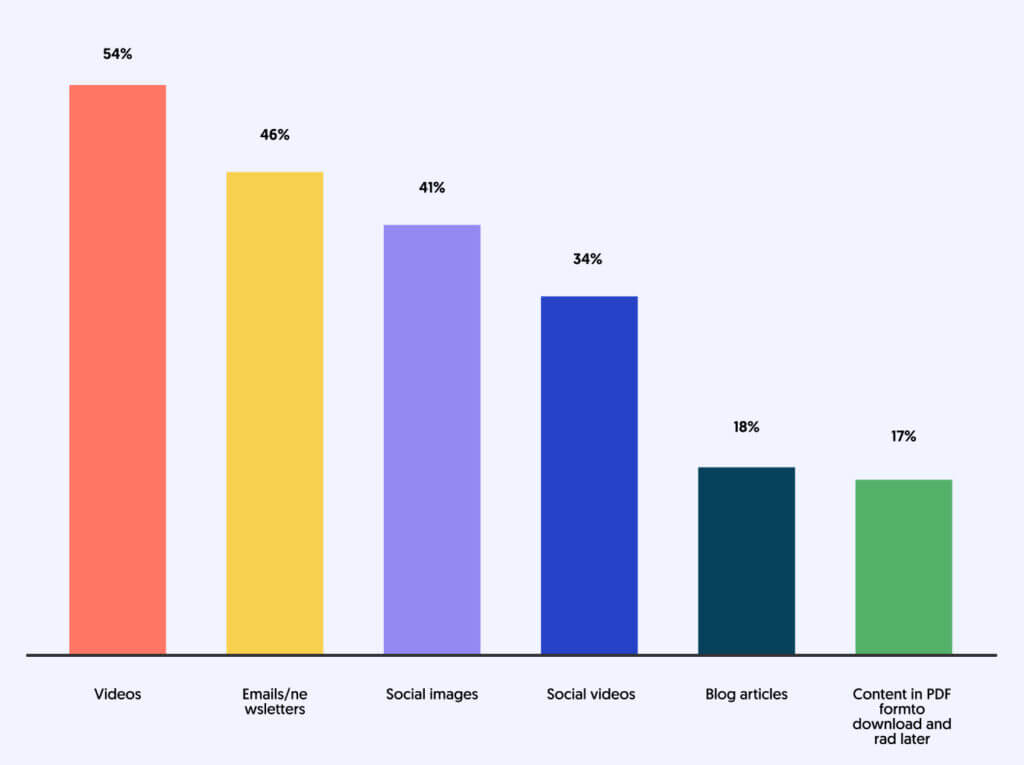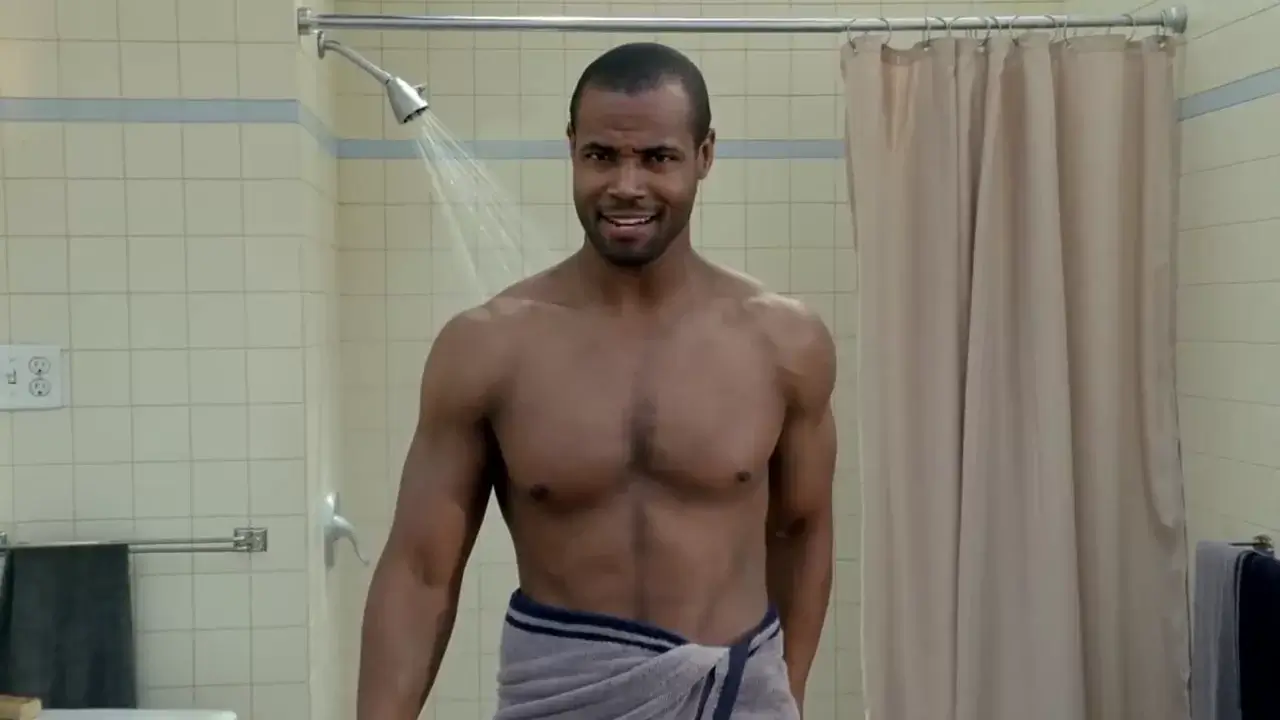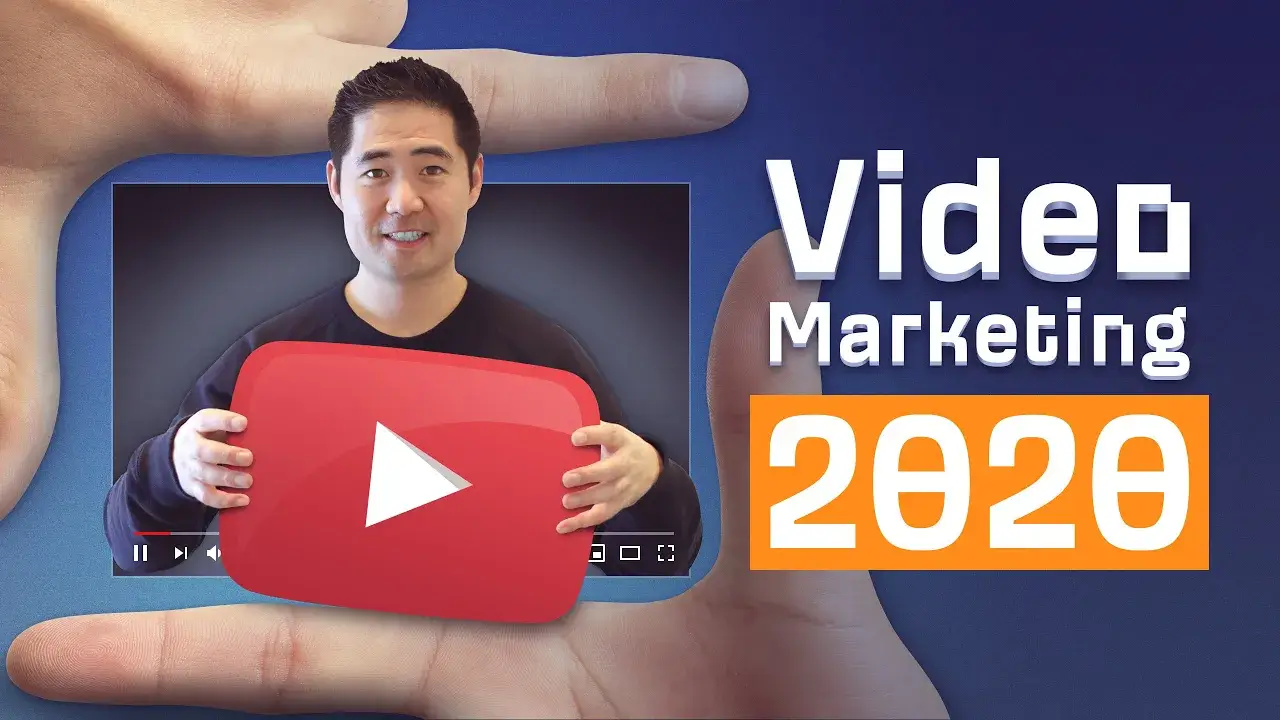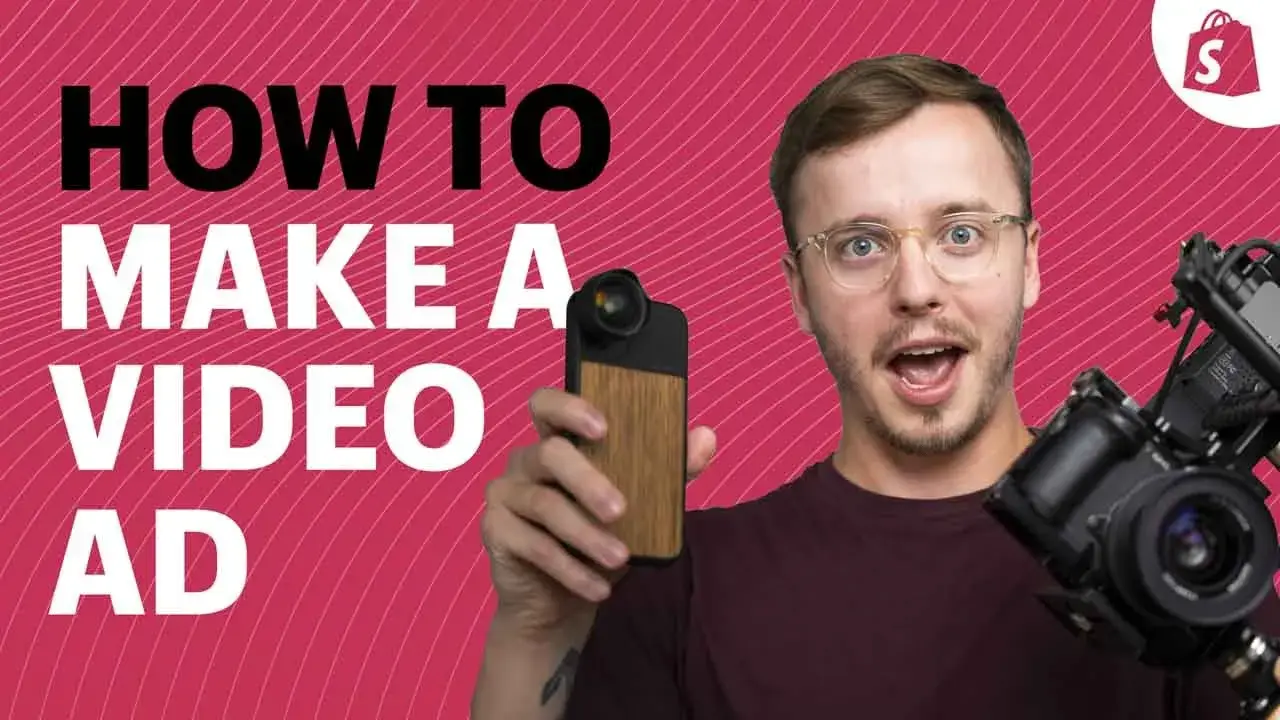How to get started with video marketing?
Learn how creating video marketing ads is what customers respond to and prefer seeing from businesses, this increases engagement over time.

We love to consume videos online. Whether it’s online entertainment, ads, videos that bring awareness, or any other type of video, this isn’t a trend that’s going away any time soon.
When it comes to videos and business, 85% of businesses are actually using video as a marketing tool. The demand for videos increases year after year so, of course, it only makes sense for businesses to take advantage of this medium.
If you aren’t yet using videos to promote your business, brand, or products, or you’re looking for ways to optimize your marketing efforts, then keep reading for some basic tips on how to use video marketing for your small business.
What is video marketing?
At its core, video marketing is a content strategy. Think of it in terms of a traditional television commercial. When we watch TV, the program is usually interspersed with 30-second ads where a product is introduced and promoted. However, nowadays video marketing is a lot more complex than that thanks to online accessibility and social media.

Video marketing can be used for a lot more than a short promotional ad. Businesses can use videos for a wide range of purposes (I’ll get into that soon), and the result is a marketing strategy that’s a lot more versatile and flexible.
TV commercials and video marketing do have some stark differences, though. When companies would purchase air time to run an ad, they usually don’t have much control over who sees their ads, when their ads air, or a number of other factors.
With video marketing, on the other hand, marketers can actually target a specific audience, control when and where a video is seen, gain instant insight and data about a video campaign, and generally retain a lot more control over their video.
When compared to other methods of marketing, video marketing leads the pack in terms of what customers respond to and prefer seeing from businesses.
Still, it’s best to have a good mix of marketing strategies to reach the widest audience. Just because videos are more effective, doesn’t mean you should disregard other strategies altogether. Instead, look for ways to integrate them, like using videos in your email newsletters, in your blog posts, and on your social channels.

Types of video marketing
Video marketing encompasses more than only overt video advertisements. Brands use videos in a lot of different ways, and not all of them are meant to sell or convert clients. The goal of your video marketing strategy can reach much farther than just promoting a product in order to affect your bottom line. It can also help you increase brand awareness, deepen customer loyalty, make a statement, or tap into a new customer base.
There are dozens of different kinds of video marketing approaches your small business could be using, like videos for company announcements, videos that introduce staff members, event videos, and more. But for small businesses that are just getting started and want to put out videos with the most impact, here are a few of the most popular types.
Product marketing videos
The goal of product videos is simple: promote and raise awareness for a product. It could be for a new launch or to highlight a unique product that your business has and your competition doesn’t.
These videos should do more than show than just push a product, they should tell a story while further deepening brand loyalty. Furthermore, the story should be tailored to your intended audience in order to maximize your impact.
It sounds easy to do, but you also need to find a way to make your product, and by relation, your video, stand out. Old Spice did this really well with its series of commercials for its “The Man Your Man Could Smell Like” campaign. These commercials were successful because the ads pushed a product by telling a story in a way that was unique, demanded attention, and also appealed to Old Spice’s target audience.
Video example: Old Spice | The Man Your Man Could Smell Like

Educational videos
Some videos don’t push products, but rather they educate or instruct clients about your overall business, aspects of it, or specific features.
Educational videos are meant to walk a customer through the process of something that has to do with your business, like Squarespace’s video down below. These types of videos show that you care about your customers’ success by creating content that helps deepen their understanding.
If your customers see enough educational videos from your brand, they’ll know that your business is reliable and cares about its clients. It creates a level of trust between your small business and your audience.
Video example: Squarespace | The Difference Between a Domain Name and Web Hosting

Testimonials
Get your customers involved in your video marketing strategy by including them and their voices in videos. You can create videos that display customer testimonials, case studies or integrate user-generated content into your video.
These videos work by showing your product or service in action. By using real customers and their stories, you’re showing your audience again that they can trust you and get the result they want by using your product or service.
Salesforce achieves this by creating a video that highlights one customer’s experience. The video tells her story and demonstrates the impact Salesforce had on her life.
Video example: Salesforce | My Trailblazer Story: Stephanie Herrera

Social videos
A lot of companies tend to use their social channels to repeat the same video ads they used everywhere else, but this can be a big mistake.
Social media users expect content to be tailored to them, so putting the same ad they’ve already seen on their Instagram or Facebook feeds can have the opposite effect of what you want to achieve.
Furthermore, with the growing popularity of videos in stories that disappear after 24 hours, it can be hard to see the benefit of creating temporary content, but in reality, these videos do help increase brand awareness.
But the truth is that social media success is very hard to manufacture or predict. Sometimes things take off in the most unpredicted manner, and the question becomes how to ride the wave longest.
A perfect example of this was the Cranberry-Raspberry drink by Ocean Spray that became instantly famous and cleaned off the shelf by TikTok’s strawberry juice guy.
The man, named Nathan Apodaca, had his car break down and had to skateboard his way home, meanwhile drinking his “strawberry juice”. As the video became viral, the question was asked “what is he drinking?”. Ocean spray was quick to answer. And when people started mimicking the video they went out and bought the drink themselves, cleaning the shelves.
Video example: Ocean Spray | TikTok’s strawberry juice guy

Benefits of video marketing
We’ve briefly touched upon how different types of videos work for different aspects of your business. Still, it’s worth diving a little deeper into this topic so that you can really understand how spending money on video marketing can greatly benefit your small business.
1. Brand awareness
The concept of brand awareness is quite self-explanatory: you want to increase the awareness of consumers about your brand.
There are, of course, many ways you can achieve this, but video marketing does a pretty good job of it. A video can help carry and spread your brand’s message to a wide audience. Even if someone viewing your video isn’t interested in interacting with your brand right now, the video will help introduce your product or service to them. When they are ready to convert into paying customers, they’ll likely remember your video and your business.
Creating brand awareness is not something that’s accomplished with one ad or one video. It’s a long-term strategy where you’re consistently positioning your brand in front of your customers.
2. Increase engagement
Engagement is key in the digital marketing world. Your marketing efforts need to do more than just reach your audience. If your content isn’t engaging people, then your marketing campaign has failed.
Videos can help increase engagement with your brand. In fact, studies prove that videos on social channels such as Instagram get higher engagement rates compared to other types of content, like images.
Engaging with your customers, especially on social media, can have a chain effect. If they like your videos and identify with them, you can gain more followers, which means you grow your audience and have a stronger platform where you can then advertise your business and promote sales.
3. Establishes trust
Since we’ve already established that videos are more engaging than other forms of content or advertising, then you can use these videos to create a personal connection with your audience.
When you have a personal connection, you start to build trust. A combination of different types of videos will help your clients trust you, your products, and your services. These videos also allow customers to get to know you, so instead of being seen only as a company, your clients will begin to see your business as more relatable on a personal level.
Getting your audience to engage and acquire their trust is the ultimate way for achieving sustained (and cost-effective) growth. The end goal is to build a community around your video content, where like-minded people can gather, comment, receive, and give value.
Tip: you can repurpose your video content for creating a podcast in an audio-only format with little extra effort. You can use the same principles as with video content to build a community around your podcast.
4. Builds your voice
Videos do more heavy lifting when it comes to establishing your brand’s voice than any other form of content or advertising.
When done correctly, videos can help your clients see you in a different light. Whether you want to be funny, establish yourself as an expert in your field, or showcase your company’s commitment to its values, videos can help you accomplish this.
In order to really cement your brand’s voice, all of your videos should be consistent, and they should also match the tone and messages of your other marketing campaigns. You can accomplish this in a few ways, such as using a spokesperson or someone who is the “face” of your company (think Jared from Subway), or by telling a continuous story throughout your videos.
5. Generates traffic
Finally, the ultimate goal with video marketing, or any marketing, is to increase your bottom line. You want your marketing strategy to be as effective as possible, and video marketing can do that for you.
Studies show that 64% of consumers will make a purchase after watching branded content. More than just encouraging people to make a purchase, video marketing is also used to generate quality leads. It’s been shown that video marketing can help nurture leads and drive traffic by up to 300%.
7 Essential steps to creating videos
Sometimes, business owners will have a great idea for an ad or a video, and instead of going through these steps, they create the video and distribute it, only for it to fall flat. It’s important to understand that an effective marketing email signature video is more than just a great idea. It takes a lot more thought and planning to relay your message effectively and to the right audience.
Here are seven steps you need to consider throughout the video-making process. It may seem like a lot of work, but it’ll be worth it in the long run. Furthermore, once you’ve done the work once, you likely won’t need to repeat it for similar marketing campaigns as a lot of the metrics and reasonings will likely be the same.
Video: How to use video marketing to grow your business

Step 1: Figure out your audience
You need to have a concrete idea of your target audience before you start. Understanding who your intended viewer is will help you create content that is tailored to them, their interests, and their preferences.
Try and get into your audience’s head. Think about what they know, what they don’t know, and what they’re curious about. You can also consider other factors, like where they might already shop, their age group, where they live, or their interests. All of these will help you target your video for the right people.
Determining your audience is a crucial first step for any marketing campaign, but the beauty of doing it for a video is that, depending on where you distribute it, you can get really specific about your audience. For example, Facebook can narrow down your intended audience by choosing a geographic location, age, sex, and other interests. This means your videos will be seen by those who most relate to the product or service you’re advertising.

This is the time to do some research. Send out surveys to clients, do some online reading on blogs and forums, and communicate openly with both past and current customers. You might even be surprised to find a whole new demographic aside from the one you intended.
Researching your audience will also help you decide which platform to concentrate your efforts on. There are many places and social channels where you can release your videos, but knowing where your audience “hangs out” online is important to know so that you can reach them where they are.
Step 2: Establish your goals
Not every video is made with the same goal in mind. In order to decide on a goal, it’s important to first understand the different benefits of video marketing for your small business. Videos can help create brand awareness, establish trust, promote a product or service, educate your clients, or generate traffic and leads, and a lot more.
Before you start making your video, you need to do some goal planning. A video with the purpose of creating brand awareness will not be the same as a video that’s made to educate your clients. Therefore, the content of your video will need to be different depending on your ultimate goal.
If your overall marketing goal is a combination of the aspects I mentioned above, then it’s worth creating a content strategy that includes a few different types of videos. Each video should be created with one goal in mind. When you start to mix different goals in a single video, you risk having your message get lost.

Choosing a goal will also help direct every choice you make for your video. When forming your video idea, writing a script, and choosing a platform for your video, your goal will help you navigate through the different processes and provide you with a clear direction.
Step 3: Pick the main platform
You shouldn’t leave your chosen platform as an afterthought. Different platforms might have different requirements for your video. Additionally, you’ll also reach a different audience on various social media platforms, so it’s important to decide which platform you’re going to be focusing on from the start.
By this step, you should have already established your goals, and this will help guide you to the right platform. For example, if your goal is engagement, then you want to put your video on platforms like Facebook or Instagram. If your goal is to educate your clients, then you should upload your video to YouTube and also link it to a blog post on your website.
The platform you decide on will also dictate some practical elements of your video, such as its length, aspect ratio, whether your video is horizontal or vertical, and what other elements you might need, such as captions. If you’re thinking of posting on social media, then it’s likely that your audience is viewing your video on their mobile, so this needs to be taken into consideration as well.

The grid above will give you a good overall view of the different recommendations and limitations on the most popular platform for video email signature, but the ones you choose should be ultimately up to you.
Step 4: Decide on an idea and video type
Now comes the fun part: forming an idea for a view and deciding which type of video you create.
Again, your goal, audience, and chosen platform will all influence the actual content of your video as well as the type of video you’ll make.
If you already have an idea, great! You just need to figure out how it lines up with your audience and goals. If you don’t have any clue about where to start, then keep reading.
A good video should start with a strong script. Now, this doesn’t mean your video has to be entirely dialogue or narration, but in the same way, you would want to create good marketing copy, you should also write with the intention for your video too.

You don’t have to actually film a video to create one. Perhaps your message will be better conveyed in an animated video. If you’re making an educational video that explains an aspect of your business or product, then this can be really effective.
It’s also important to include a call to action in your video. When uploading your content to various social channels, like Facebook or Instagram for example, you can choose to add an actual CTA button or link. However, this should also be reflected in your video. You want your content to inspire your audience to do something, whether it’s sharing your video, making a purchase, or engaging with your brand.
Finally, make sure your video includes and amplifies our brand’s voice and tone. Do you want your video to be funny, serious, dramatic, inspirational? Whichever overall tone you select for each video, it should always remain true to your brand.
So if you’ve regularly released light-hearted content that’s witty and relatable, it would be strange for your audience to suddenly see a video with a somber or more serious tone.
Step 5: Set your budget
Setting your budget for your video should include two separate costs: the cost of creating the video itself and the cost of promoting it.
The first one is pretty self-explanatory. Your budget should include things like filming, paying actors or for an animator and renting equipment and space. This is a one-time fee.
After the video is done and you’re ready to post it online, you also need to factor in the costs of promoting it on different channels. Unless your small business already has a large, dedicated audience, then you’ll need to invest your money into paid promotions.
You can do this on platforms like Facebook and Instagram. After setting your audience parameters, your video will show up as a sponsored ad when users scroll through their feeds. This is why determining your audience, goals, and platforms is so important. The more your video looks like the content your audience normally engages with on a daily basis, the more likely they are to view your video.
The budget for your promotional campaign can vary widely. You might decide to promote your video for a finite amount of time, or maybe you want it viewed continuously for better brand awareness. Your ultimate goals will determine this and help you set a budget.
Step 6: Decide how you will measure success
The last step before releasing your videos should be deciding how you’ll determine if your video was successful or not.
Based on your goals, you’ll want to outline for yourself what success looks like. If your goal was to increase brand awareness, then you’ll want to look at the number of shares. If you’re promoting a product, then you’ll want to see if your sales have gone up. If you’re trying to generate leads or traffic to your website, then you’ll need to track the click-through rate of the CTAs attached to your video.
Each business and each video will have its own metrics to measure success, but it’s important to define them before putting your video out into the world.
Step 7: Analyze and optimize
The final step comes after you’ve already released your video. Give it some time to gain traction and reach as wide of an audience as possible.
Before you begin to pat yourself on the back for a job well done, it’s time to analyze the success of your video and optimize for your next one.
If your video was successful based on the metrics you set in step 6, then congratulations! Keep going in the same direction for your next videos. If your video didn’t do as well as you thought it would, then you missed something at some point in this funnel.

Use the analytics from your video to determine what went wrong. Was your intended audience way off from your actual audience? Was the type of video you created mismatched with your goals? Was the platform you chose wrong for your message and your audience?
Don’t be discouraged, this is actually part of the process of creating amazing videos for your small business. You now have more knowledge and tools to help make your next video even better!
Don’t skip your steps
It may seem like a lot of time and planning for just one video, but going through these steps can really help you reach your target.
These steps don’t need to be done in the exact order I’ve laid out here. You can go through them in any order that works for you and your small business. However, this particular order works well for the majority of businesses since each one naturally leads to the next.
Video marketing can be a powerful tool for growing your small business, you just need to make sure you’re using it correctly.
Before you start making videos
While creating video content can have a number of great impacts on your business, it can be tough to get started. A lot of marketers don’t know where to begin. In order to create a solid video marketing strategy, it’s important to first outline a few factors relating to your business.
6 questions to ask yourself before video creation:
- Who am I creating these videos for?
- What are my goals for video making?
- What is my budget for video creation?
- How can I create the biggest impact with my videos?
- Which platform should I use to release my videos?
- After releasing the initial video, how can I improve it for future videos?
Thinking about these questions will help focus your efforts so your videos have the most impact on your small business’s bottom line.
How to make video marketing videos (in just 30 minutes)
Creating a video doesn’t have to be time-consuming or financially draining, and you can even create a simple video in just a matter of minutes. Viewers’ attention spans are short so a 30 second- 1-minute video is an acceptable length and can be easily created on a regular basis using just your smartphone.
To help you create and share your first video I’m going to walk you through the steps, and you’ll see just how simple it is to make your own.
Video: How to make a video ad in 30 minutes

What you need to get started:
- Smartphone
- Stabilizer like a tripod or a table you can put your smartphone on to record yourself
- A YouTube channel
- A quiet, well-lit place to film — natural lighting from outside is preferential!
Now, let’s break it down!
First 10 minutes:
Outline your video: Just outline! Choose a very simple topic that you can cover comfortably in a full take, such as an introduction of yourself and your business or the answer to a simple question that you frequently receive. Speed and practice is the goal for this video, we are just looking for an opportunity to move quickly and get started. You can make your notes in Word or Google Docs, an email, regular old paper, or even on a whiteboard, to guide you as you are filming.
Middle 10 minutes:
Record your video: Find a nice, quiet place with great natural lighting to record. The only tools you really need for this are your smartphone camera and some kind of stabilization for it, like a tripod or a sturdy stack of books.
But if you want your filming to go really smoothly a remote shutter would be a handy tool to have, so that you don’t have to get up every time you want to cut and start a new take. I use a little Bluetooth “selfie” shutter that cost me about $7 on Amazon. Try to get one solid take that you like so you are only uploading one file to YouTube to edit.
Last 10 minutes:
Import and/or upload your video:
Once you have a full take that you are happy with there are a variety of ways to import or upload the video. If you have an iPhone you can use AirDrop to upload your video or you upload it to your Dropbox account You can also upload the video directly to YouTube with the YouTube Capture app.
My personal preference is to simply sync my phone to my computer by plugging it in, and then using Image Capture to move my video files to a new folder. I find this to be the simplest method.
Edit your video:
Once the file is on my computer I edit it using Final Cut Pro X. For simple touches, you can actually do your video editing directly on Youtube, or use a simple video editing tool like Fastreel. YouTube allows you to make simple cuts and add transitions, title bars, and even FREE stock music to your videos right on the site.
How to edit your video in YouTube:
- Upload your video and set it to unlisted so that you can make changes without being visible.
- While the video is uploading add your Title, Description and Tags. Make sure to use keywords that will attract the audience that you want, but also keep your information concise.
- After your video has uploaded go back to the upload button, at the top right on your desktop, as if you were going to do it all over again. Once you get to the upload screen look to the list on the right and find the “Edit” button. Click here and select the video you just added so that you can adjust the colors, make cuts, and add transitions and titles.
And ta-da, you’ve made your first video! Now that’s just getting your video on the web. Promoting it further will take more of your time but you can follow these 5 guidelines to make it simpler.
My 5 favorite video distribution tips:
- Add your video to your WiseStamp signature. They make it so easy!
- Send your video to your email newsletter subscribers.
- Share general posts about the video to your social media networks several times, using at least slightly different wording each time.
- Share your video to specific people through social media who you think could benefit from it. A more personal touchpoint can go a long way!
- As your content grows don’t be afraid to dig back and share your older videos, while continuing to share your fresh content.
All right, those are the basics of getting started. Do you feel like you’re ready to tackle your first video? So go out there and give it a shot! And if you have any questions for me feel free to leave a comment below. You can also get inspired with out Top tech YouTubers article

